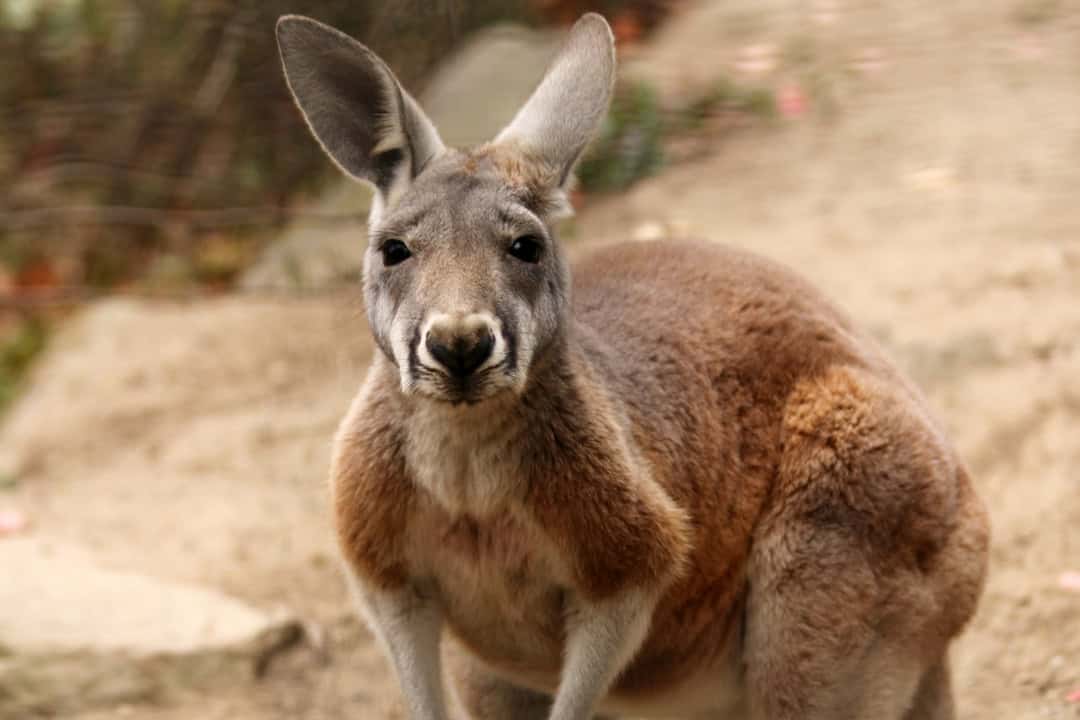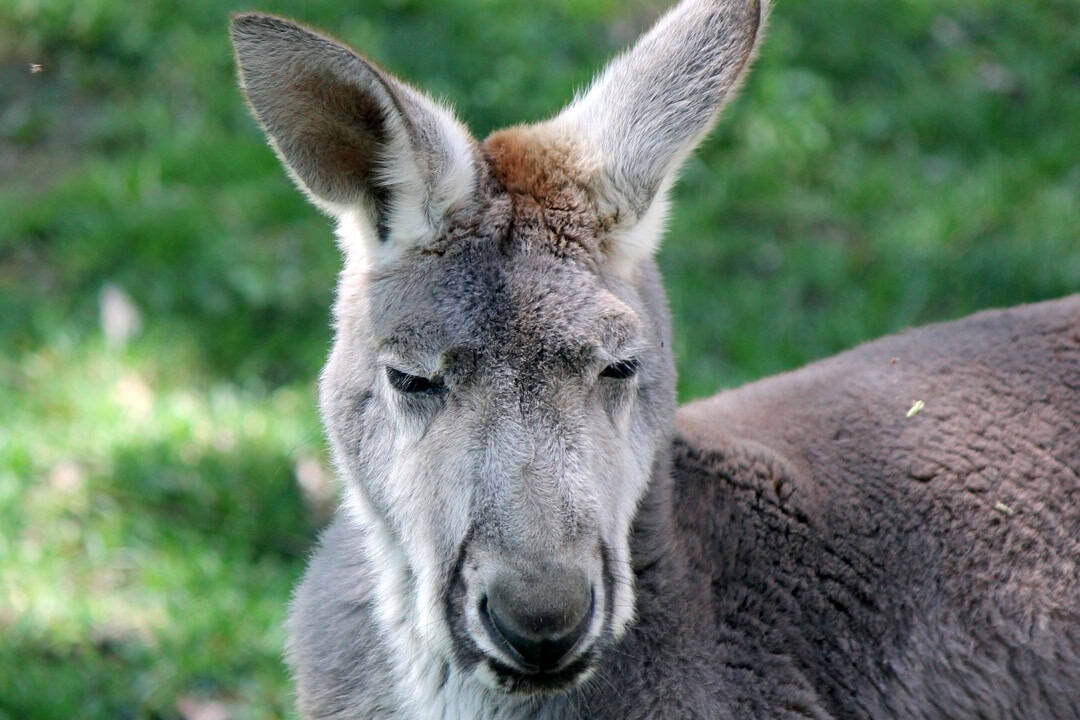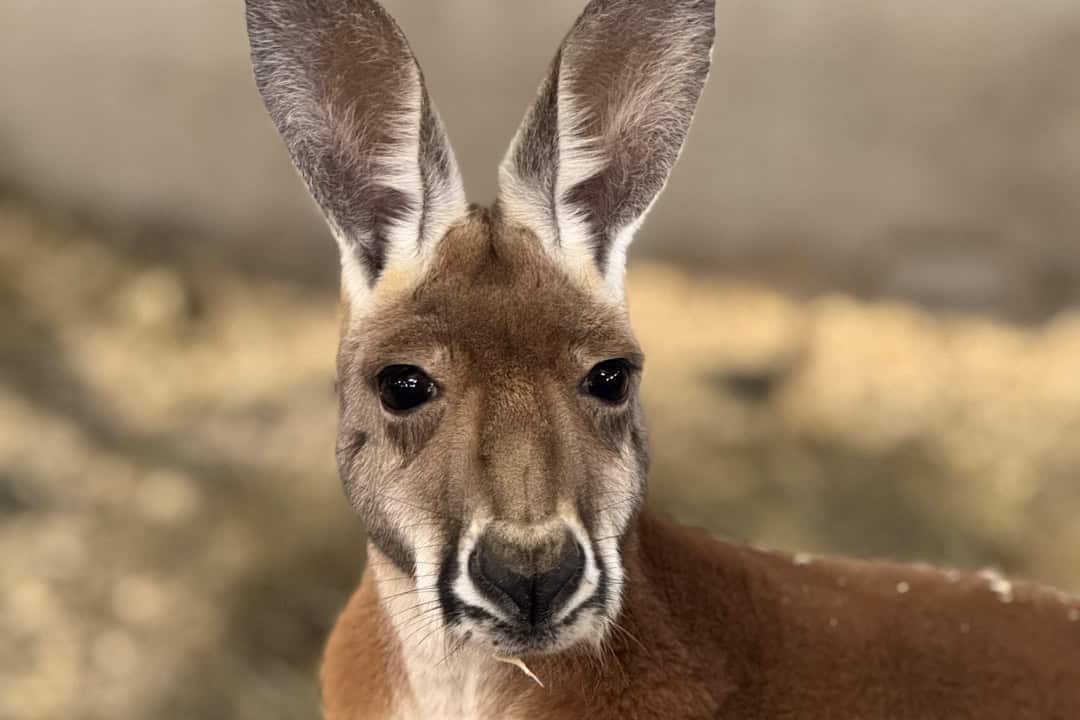Red Kangaroo
Macropus rufus
Class: Mammalia Order: Diprotodontia Family: Macropodidae
Size
Height (Males): 6 feet
Height (Females): 3.6 feet
Weight (Males): 200+ lbs
Weight (Females): 77 lbs
Lifespan
15-20 years
Diet
Grasses and leaves
Habitat & Range
Grasslands and deserts of Australia
Interesting Facts
- Red Kangaroos are the largest mammal living in Australia. They are also the largest species of marsupials. Marsupials are mammals whose young develop outside of the womb.
- They are macropods. This means “big foot”. Kangaroos can leap a distance of up to 26 feet and as high as 10 feet.
- Kangaroos have a rather short gestation period of 33 days. After the joey, which is the size of a jelly bean, is born, it climbs up the mother’s belly and into her pouch. It stays there, feeding from a nipple inside, for 190 days.
- Groups of kangaroos, called a mob, are led by a male. Males are called “boomers”. The rest of the group members are females, known as “does” or “flyers”, and their young which are called “joeys”.
Interesting Facts
Red Kangaroos are the largest mammal living in Australia. They are also the largest species of marsupials. Marsupials are mammals whose young develop outside of the womb.
They are macropods. This means “big foot”. Kangaroos can leap a distance of up to 26 feet and as high as 10 feet.
Kangaroos have a rather short gestation period of 33 days. After the joey, which is the size of a jelly bean, is born, it climbs up the mother’s belly and into her pouch. It stays there, feeding from a nipple inside, for 190 days.
Groups of kangaroos, called a mob, are led by a male. Males are called “boomers”. The rest of the group members are females, known as “does” or “flyers”, and their young which are called “joeys”.



Conservation Status
Least Concern
Threats
Red Kangaroos have a large and stable population. They have few major threats.
